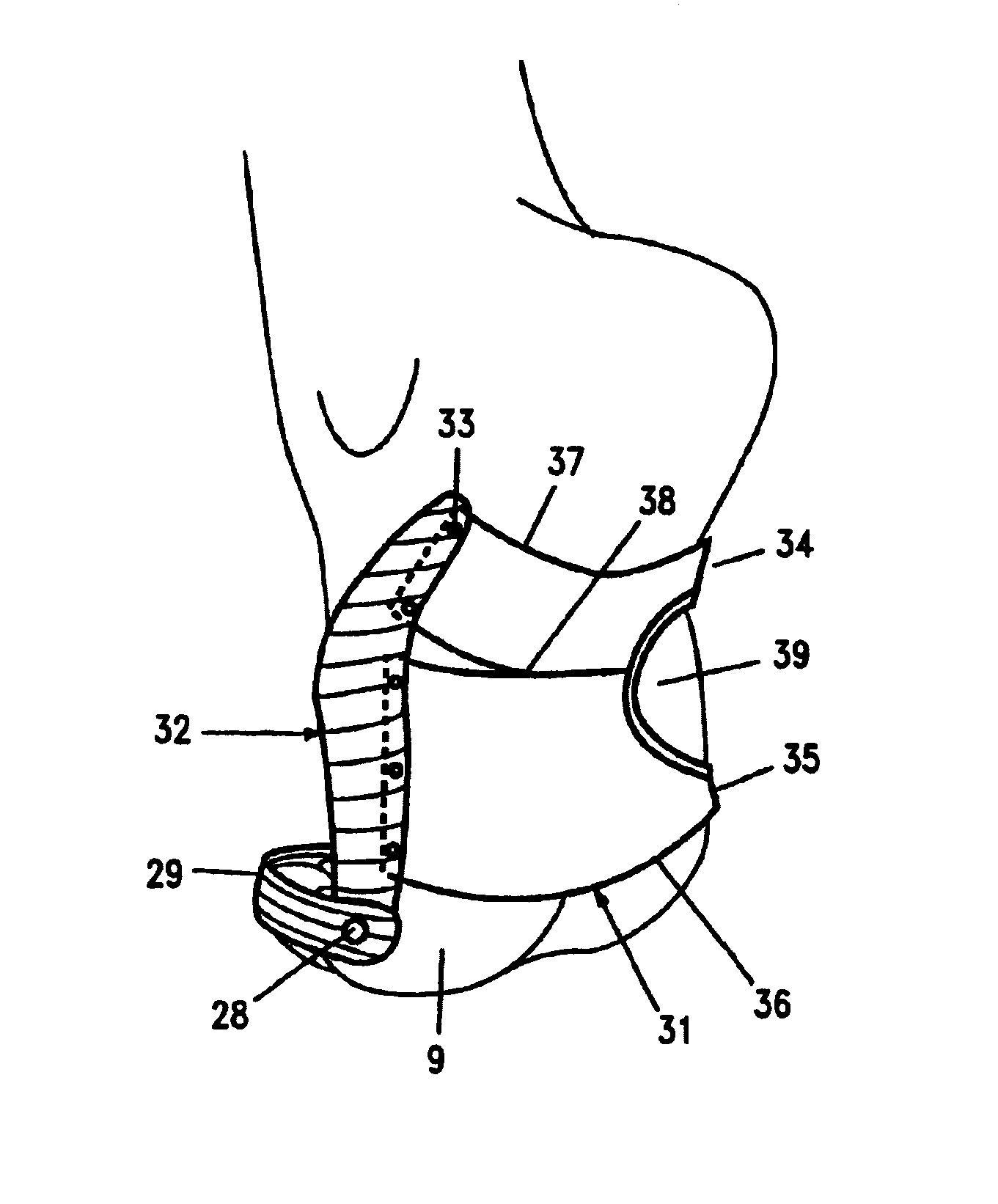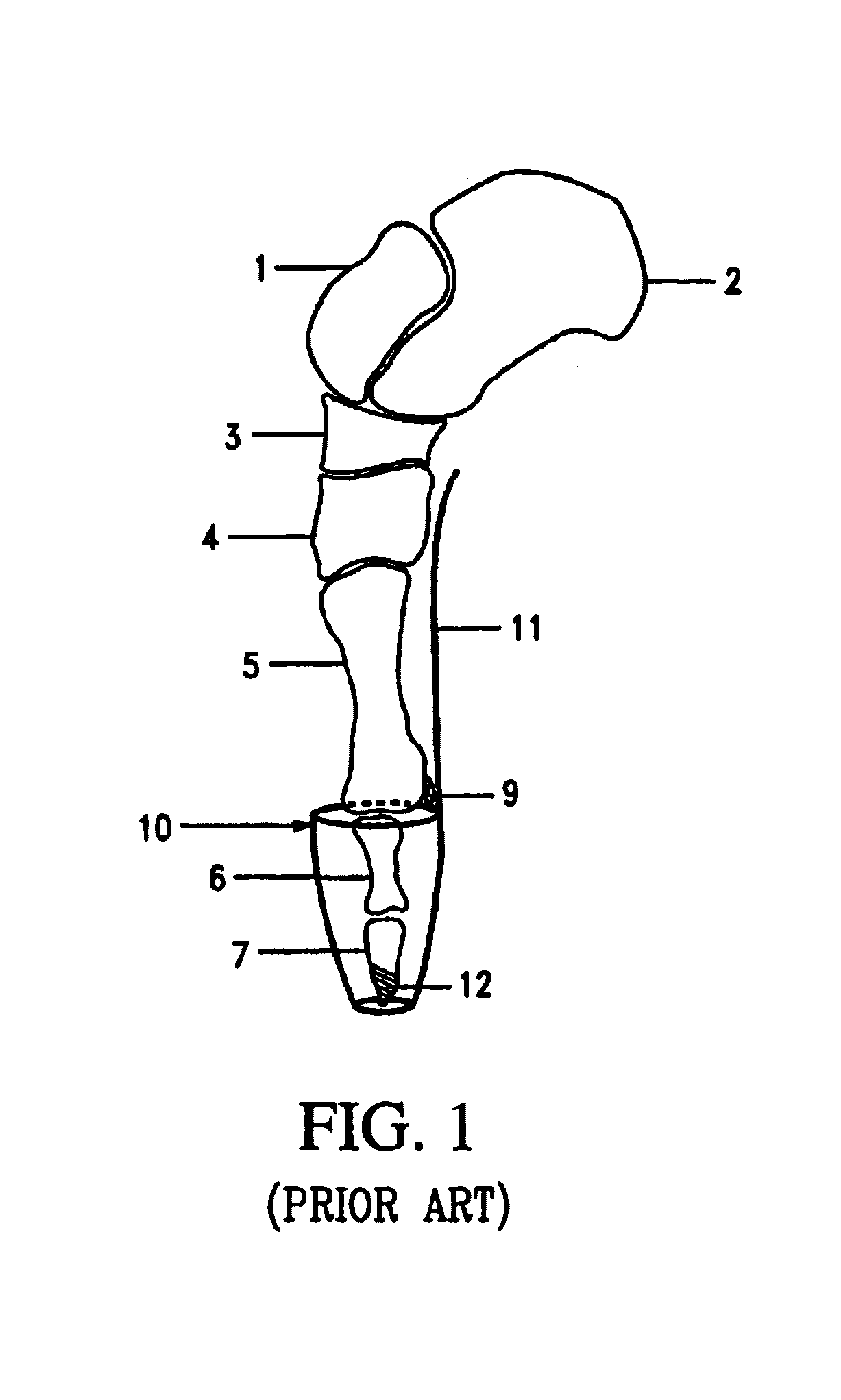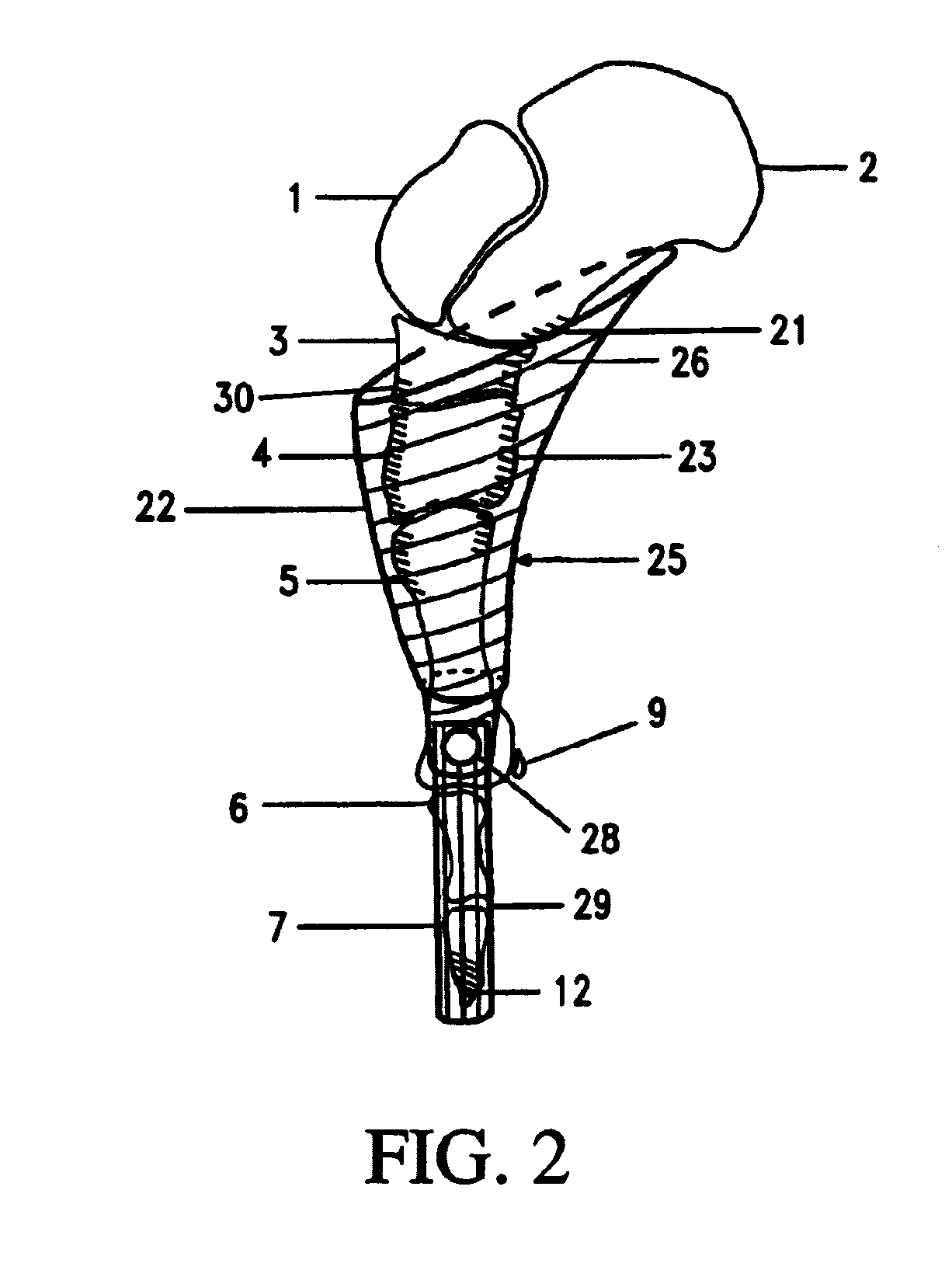Rigid articulated Pointe shoe
a pointe shoe, rigid technology, applied in the direction of uppers, bootlegs, stiffners, etc., can solve the problems of many foot injuries, bunions, bruises or lost toenails, and injury to the toes of the feet, so as to reduce pain and injury, relieve the high load of force, and reduce the downward force on the toes
- Summary
- Abstract
- Description
- Claims
- Application Information
AI Technical Summary
Benefits of technology
Problems solved by technology
Method used
Image
Examples
Embodiment Construction
[0044]FIG. 1“prior art” and FIG. 2“the invention,” are side views of the medial bones of the right foot for comparing the corresponding shoe structures that support the foot in Pointe position. The bones along the big toe side of the foot are top to bottom: talus 1, calcaneus 2, navicular 3, cuneiform 4, metatarsal 5, phalanges 6, phalanges 7. The foot may be divided into three sections: a heel section (calcaneus 2) at the back, a mid-foot section having five bones, and the nineteen bones of the front of the foot. The five mid-foot bones are: one navicular 3, three cuneiform 4, and one cuboid bone not shown. The ball of the foot 9 is located at the front of the big toe metatarsal and has two small sesamoid bones. The big toe shown has two phalanges 6, 7, while the rest of the toes have three phalanges each, which are much smaller and weaker, and not shown.
[0045]In FIG. 1, the classic Pointe shoe has a rigid shank 11 from the tip of the toes 12 to the back of the arch at the front of...
PUM
 Login to View More
Login to View More Abstract
Description
Claims
Application Information
 Login to View More
Login to View More - R&D
- Intellectual Property
- Life Sciences
- Materials
- Tech Scout
- Unparalleled Data Quality
- Higher Quality Content
- 60% Fewer Hallucinations
Browse by: Latest US Patents, China's latest patents, Technical Efficacy Thesaurus, Application Domain, Technology Topic, Popular Technical Reports.
© 2025 PatSnap. All rights reserved.Legal|Privacy policy|Modern Slavery Act Transparency Statement|Sitemap|About US| Contact US: help@patsnap.com



